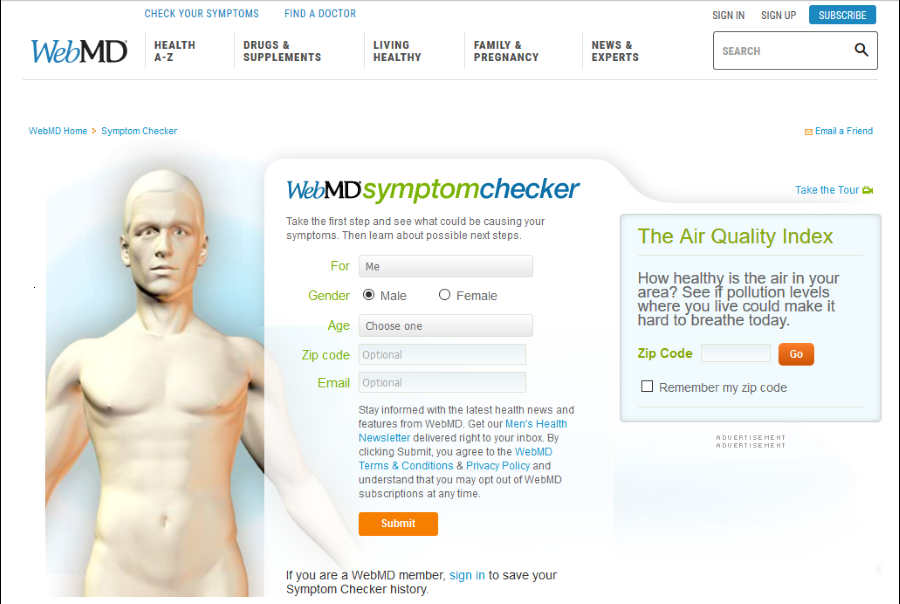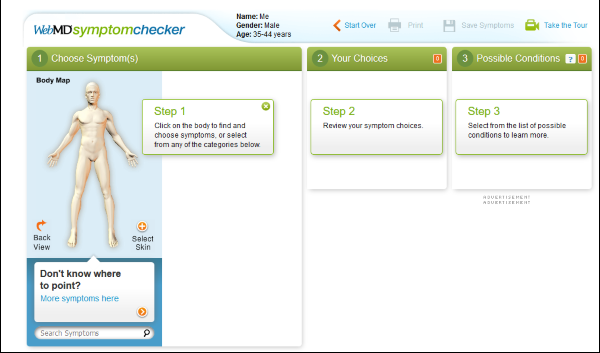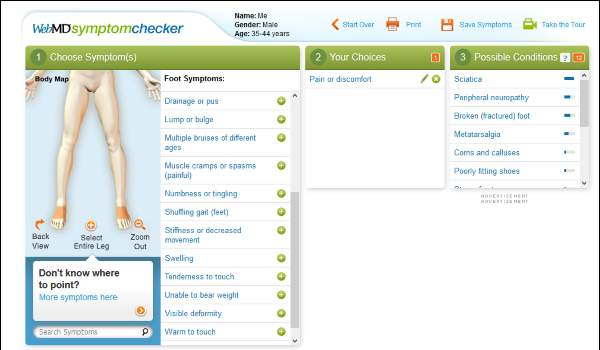Diagnose Yourself From Home With the WebMD Symptom Checker

If you wake up one morning with a splitting headache or pain in your abdomen, how do you know whether to schedule an appointment with your physician or get to the ER? One way is experience and/or guessing and the other is by using the WebMD Symptom Checker.
The WebMD Symptom Checker is a website with accompanying app that helps you diagnose a huge range of illnesses and ailments.
With either the website or app, you can quickly identify what is wrong and a potential course of action. While nothing beats a professional medical opinion, if you don’t have access to that, the WebMD Symptom Checker can help get you through.

How to use the WebMD Symptom Checker
The initial screen is quite self-explanatory. Enter the details about who is searching for whom, the gender and age. Feel free to ignore the Zip code and email section as they play no part in checking symptoms. If you want to communicate with WebMD, then by all means fill them in. Then click Submit.
On the next page, click the place on the body image where you want to check. You will be able to refine the area as you click until you get the exact position you need. If you don’t know where to click, type in the symptoms in the search box at the bottom of the image. You can also click ‘More symptoms here’ if you cannot identify exactly where on the image the symptoms appear.
Once you have isolated where the symptoms are occurring, you now get to select what the symptoms are. A list will appear next to the image listing a range of symptoms commonly associated with the area or symptom you selected. Choose the symptom that closely matches the one you’re researching.
Once you select a symptom, a question box will appear that seeks to refine the symptoms with a series of targeted questions. Answer them as accurately as you can and click Next and then Finish once the questions are complete.
In the next pane, Your Choices, you should see the symptom you chose in the initial steps and then Possible Conditions in the third pane. From here, potential causes are listed in order of probability with a progress bar showing how likely that particular ailment is to be causing your symptoms. The fuller the bar, the more likely it is to be what’s causing the problem.
Click each symptom to learn more about what causes it, what you can do about it and whether to seek professional help or not.

Things to know when using the WebMD Symptom Checker
Nothing beats a professional diagnosis by a medical professional. The WebMD Symptom Checker is good at what it does but it cannot cover every illness, ailment or situation that might be causing you concern. Accuracy is high, but medicine is subjective. Different people exhibit different symptoms in different situations. So while using an app for a medical diagnosis may be a useful step to take, it should not replace a medical diagnosis.
Care should also be taken by those susceptible to suggestion. It is all too easy to latch onto a simple diagnosis because it sounds cool or likely. This is especially true for anyone with a weakness for hypochondria. Again. Nothing beats a professional diagnosis from a doctor.

















20 thoughts on “Diagnose Yourself From Home With the WebMD Symptom Checker”
The area right under the jaw on my upper neck is painful and swollen. I can feel a increase in size right under my skin. What could possibly be? I am 70 years old Male